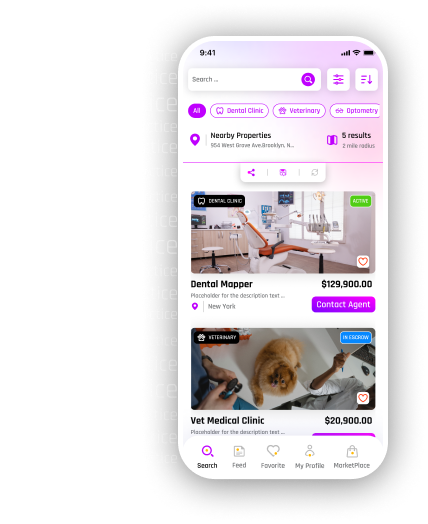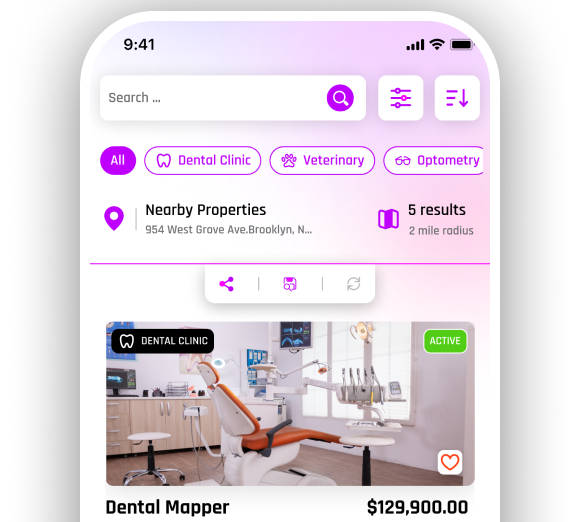Visionary Tech is Transforming Optometry in the United States

The United States' optometry sector is undergoing a technological revolution that is radically altering the manner in which eye care is provided. A future where eye health is more precise, patient-centered, and accessible is being shaped by innovation in everything from diagnostic instruments to cutting-edge digital platforms for practice listing to therapeutic techniques. This blog examines how emerging technologies transform the optometry industry, enhancing patient results and simplifying optometrists' practice operations. This blog will be helpful for those willing for a medical practice to buy in the upcoming days.
1. Advanced Diagnostic Technologies: A New Era of Precision
-
Optical Coherence Tomography (OCT): OCT is a noninvasive imaging procedure that creates fine-grained cross-sectional pictures of the retina using light waves. Using this technology, optometrists can identify diabetic retinopathy, macular degeneration, and glaucoma even before symptoms manifest.
-
Artificial Intelligence (AI) in Diagnostics: Diagnostic technologies progressively incorporate AI to evaluate data and images more rapidly and precisely. Age-related macular degeneration (AMD) and diabetic eye disease can be diagnosed early because to AI-driven algorithms that can identify patterns in retinal images. These resources increase the possibility of effective therapies by assisting optometrists in making better selections.
-
Retinal Imaging and Telemedicine: With the introduction of portable equipment, retinal imaging has advanced in sophistication and accessibility. Thanks to tele-optometry, which allows specialists from across the nation to assess photos, patients in underserved or distant areas can now obtain top-notch diagnostic care.
2. Tele-optometry: Expanding Access to Eye Care
Telemedicine has become essential in many areas of healthcare, including optometry. Thanks to tele-optometry, patients can now receive eye care services from the convenience of their homes. This invention has proved especially crucial in increasing access to care in underserved and rural areas, where there may not be as much access to professional eye care.
-
Remote Consultations: Thanks to tele-optometry, optometrists can perform remote consultations via high-definition video and imaging equipment. In this regard, PracticeFinder is one of the products of technological advancement, helping optometrists find the right practice to connect with their clients.
-
Mobile Eye Care Units: Some practices offer on-site care at workplaces, nursing homes, and schools by utilizing mobile eye care units furnished with the newest diagnostic equipment. These devices help close the gap for people who might have time or mobility issues.
3. Wearable Technology: Real-time Eye Health Monitoring
Wearable technology, which provides real-time patient eye health data, is quickly making its way into the optometry field. There are new techniques to monitor and treat eye diseases thanks to gadgets like eye-tracking technology, smart contact lenses, and eyewear with integrated sensors.
-
Smart Contact Lenses: Smart contact lenses that can track diabetes patients' blood sugar levels through their tears are being developed by companies. This technology's continuous, non-invasive monitoring has the potential to completely transform the treatment of diabetes.
-
Augmented Reality (AR) and Virtual Reality (VR): Therapeutic uses of AR and VR technology include the treatment of various vision diseases, including amblyopia, or lazy eye. Patients, especially kids, can benefit from these immersive settings by participating in fun and interactive vision treatment exercises.
4. 3D Printing and Customized Eye Care Solutions
-
Custom Eyewear: Using 3D printing, optometrists may create and produce eyeglass frames that are precisely shaped and sized to fit a patient's face. This guarantees the wearer a better fit, increased comfort, and enhanced functionality.
-
Prosthetic Eyes: 3D printing can produce incredibly lifelike and personalized prosthetic eyes that closely mimic the patient's natural eye for those who have lost an eye as a result of an accident or disease.
-
3D-Printed Lenses: Researchers are investigating techniques to employ 3D printing for personalized contact lenses, however, they are still in the experimental stage. This might completely change the production process and enable the creation of lenses that meet extremely particular visual requirements.
5. The Rise of Digital Marketplace
Digital platforms are changing how patients engage with their optometrists and manage their eye health. These marketplace apps help the health care professionals to find the right practice to get the maximum number of patients. The PracticeFinder App is one of the examples for connecting healthcare professionals to the right transition brokers and other professionals. If you are new to the field of medical practice to sell or buy, then this digital app will be perfect for you.
6. Automation and Practice Management Solutions
-
Electronic Health Records (EHR): Although they are still experimental, researchers are looking into ways to use 3D printing for customized contact lenses. This could revolutionize the manufacturing process and make it possible to produce lenses that satisfy incredibly specific visual specifications.
-
Automated Refraction Systems: Thanks to automated refraction instruments, eye exams are becoming faster and more accurate. By assisting optometrists in rapidly determining the proper lens prescription, these tools enable patients to spend less time in the examination room.
-
AI-driven Customer Service: Chatbots and AI-driven virtual assistants are handling routine customer support duties like appointment scheduling, common question answering, and basic triage. As a result, employees can now concentrate on more intricate patient interactions.
FAQs
1. What is tele-optometry, and how does it work?
Thanks to diagnostic imaging equipment and video consultations, patients can receive eye care services remotely with tele-optometry. Without going to an office, patients can talk to their optometrist about their symptoms, get prescriptions, and get eye exams.
2. How does AI help in detecting eye diseases?
Unlike traditional approaches, artificial intelligence (AI) employs algorithms to scan retinal images and other diagnostic data, finding patterns that may detect disorders like glaucoma, diabetic retinopathy, and macular degeneration early.
3. Can smart contact lenses really monitor health conditions?
Yes, by monitoring the amount of glucose in tears, smart contact lenses are being developed to monitor diseases like diabetes. This technology provides a real-time, non-invasive method of monitoring health.
4. How is 3D printing being used in optometry?
In order to give patients highly individualized options, 3D printing is being investigated for the production of customized contact lenses, prosthetic eyes, and custom-fit eyewear.

